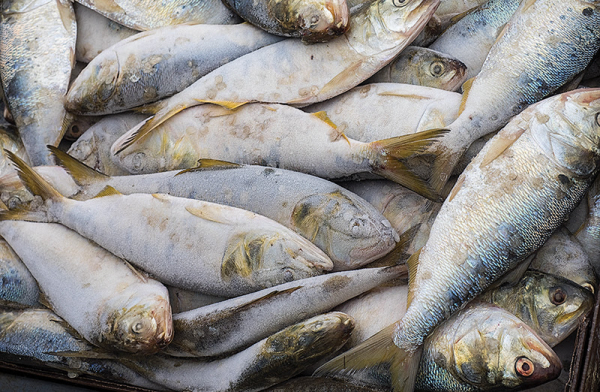Time to Account for Menhaden's Role in the Ecosystem
 Striped bass are the predators most sensitive to changes in the menhaden population, but adopting ecological reference points for menhaden management that protect striped bass will also protect other species that rely on menhaden (shown above) for food. (Dave Harp)
|
Striped bass are the predators most sensitive to changes in the menhaden population, but adopting ecological reference points for menhaden management that protect striped bass will also protect other species that rely on menhaden (shown above) for food. (Dave Harp)
There’s no question Atlantic striped bass are in trouble. Stock assessments show the fish, known locally as rockfish, are being overfished, and East Coast states have agreed to implement measures by April 1 that will cut the coastwide harvest 18% this year.
We can take another step to help striped bass recover. Protect their food.
A small, oily fish called Atlantic menhaden is a key prey species for striped bass and many other top predators in the Chesapeake Bay ecosystem, including osprey and whales. Menhaden are prized by humans, too. They support one of the largest and oldest commercial fisheries in the United States, with more than 170,000 metric tons harvested each year for use in products like fish oil and animal feed or as bait.
Management of the menhaden fishery does not currently take into account its critical role as a food source for other species. We now have the data and scientific models to do better.
At its February meeting, the Atlantic States Marine Fisheries Commission, the interstate body that sets fishing limits and rules along the East Coast, heard the results of a three-year, peer-reviewed effort to develop what are known as ecological reference points for menhaden. Ecological reference points essentially reflect how changes in the menhaden population affect populations of the fish that eat it — including striped bass, bluefish, weakfish and spiny dogfish — based on scientific models.
In other words, instead of relying on a best guess, we can now quantitatively say how many menhaden are needed to feed and sustain our desired populations of striped bass, bluefish and so forth.


 Advertising
Advertising